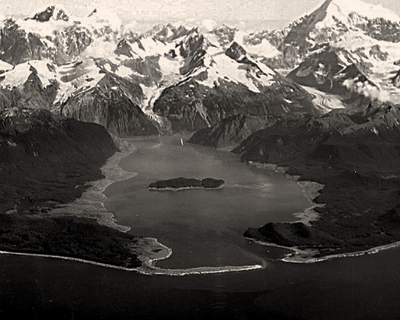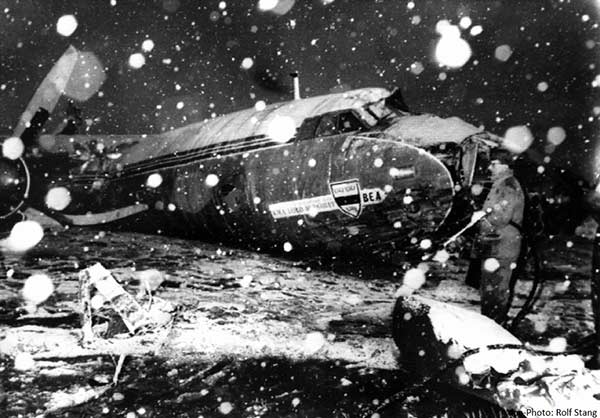Photo by Rolf Stang / Wikimedia Commons / CC-BY-SA-3.0 / GFDL
1 – Munich Air Disaster, 8 Manchester United Players Among 23 Dead
The Munich air disaster occurred on 6 February 1958, when British European Airways flight 609 crashed on its third attempt to take off from a slush-covered runway at Munich-Riem Airport, West Germany.
The Manchester United football team, nicknamed the “Busby Babes”, along with supporters and journalists.
20 of the 44 people onboard died at the scene, while three more died in hospital, resulting in 23 fatalities.
The team was returning from a European Cup match in Belgrade, Yugoslavia, against Red Star Belgrade.
The flight stopped to refuel in Munich because a non-stop flight from Belgrade to Manchester was out of the “Elizabethan”-class Airspeed Ambassador aircraft’s range.
After refueling, pilots James Thain and Kenneth Rayment twice abandoned take-off because of boost surging in the left engine.
Captain Thain rejected an overnight stay in Munich in favor of a third take-off attempt. By then, snow was falling, causing a layer of slush to form at the end of the runway.
After the aircraft hit the slush, it ploughed through a fence beyond the end of the runway and the left wing was torn off after hitting a house.
Fearing the aircraft might explode, Thain began evacuating passengers, while Manchester United goalkeeper Harry Gregg helped pull survivors from the wreckage.
An investigation by West German airport authorities originally blamed Thain, saying he did not de-ice the aircraft’s wings, despite eyewitness statements to the contrary.
It was later established that the crash was caused by the slush on the runway, which slowed the plane too much to take off.
Thain was only cleared in 1968, ten years after the incident.
2 – Megatsunami in Lituya Bay, Alaska

The 1958 Lituya Bay megatsunami occurred on July 9, following an earthquake with a moment magnitude of 7.8.
The earthquake took place on the Fairweather Fault and triggered a rockslide of 30 million cubic meters, and about 90 million tons, to fall from several hundred meters into the narrow inlet of Lituya Bay, Alaska.
The impact was heard 80 km away, and the sudden displacement of water resulted in a megatsunami that destroyed vegetation up to 1,722 feet above the height of the bay.
The wave that traveled across the bay with a crest reported by witnesses to be almost 100 feet in height.
This is the most significant megatsunami and the largest known in modern times.
The event forced a re-evaluation of large wave events, and recognition of impact, rockfall and landslide events as a previously unknown cause of very large waves.
3 – The Lego Company Patented Their Design of Lego Bricks

The Lego Group began in the workshop of Ole Kirk Christiansen, a carpenter from Billund, Denmark, who began making wooden toys in 1932.
In 1934, his company came to be called “Lego”, from the Danish phrase leg godt, which means “play well”.
In 1949 Lego began producing, among other new products, an early version of the now familiar interlocking bricks, calling them “Automatic Binding Bricks”.
In 1958, the modern brick design was developed; however, it took another five years to find the right material for it, ABS (acrylonitrile butadiene styrene) polymer.
The modern Lego brick design was patented on 28 January 1958.
Lego pieces of all varieties constitute a universal system. Despite variation in the design and the purposes of individual pieces over the years, each piece remains compatible in some way with existing pieces.
Lego bricks from 1958 still interlock with those made in the current time, and Lego sets for young children are compatible with those made for teenagers.
